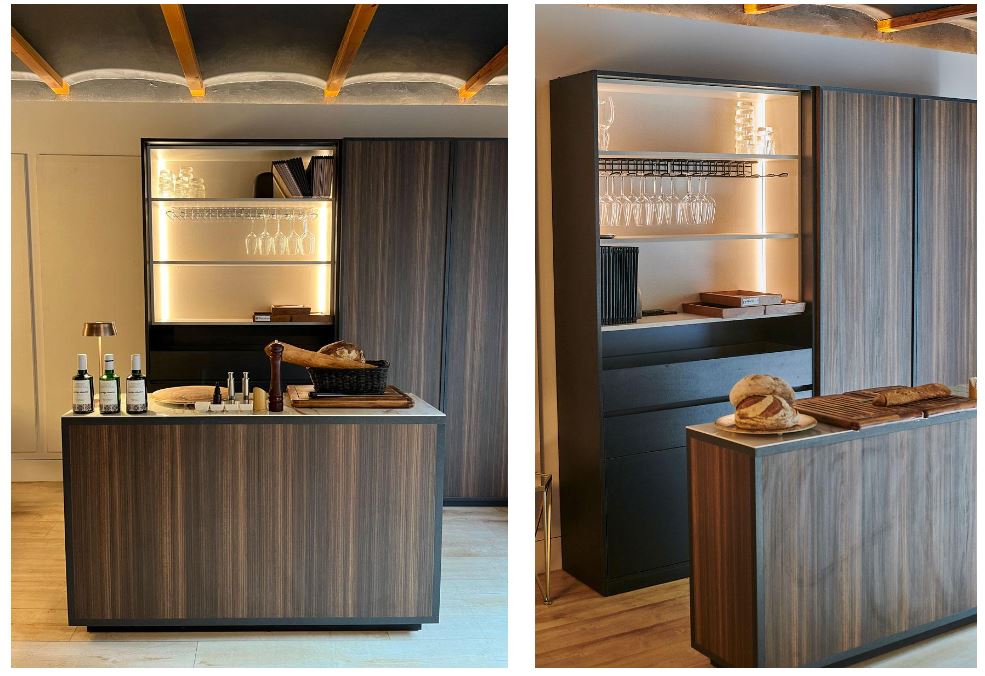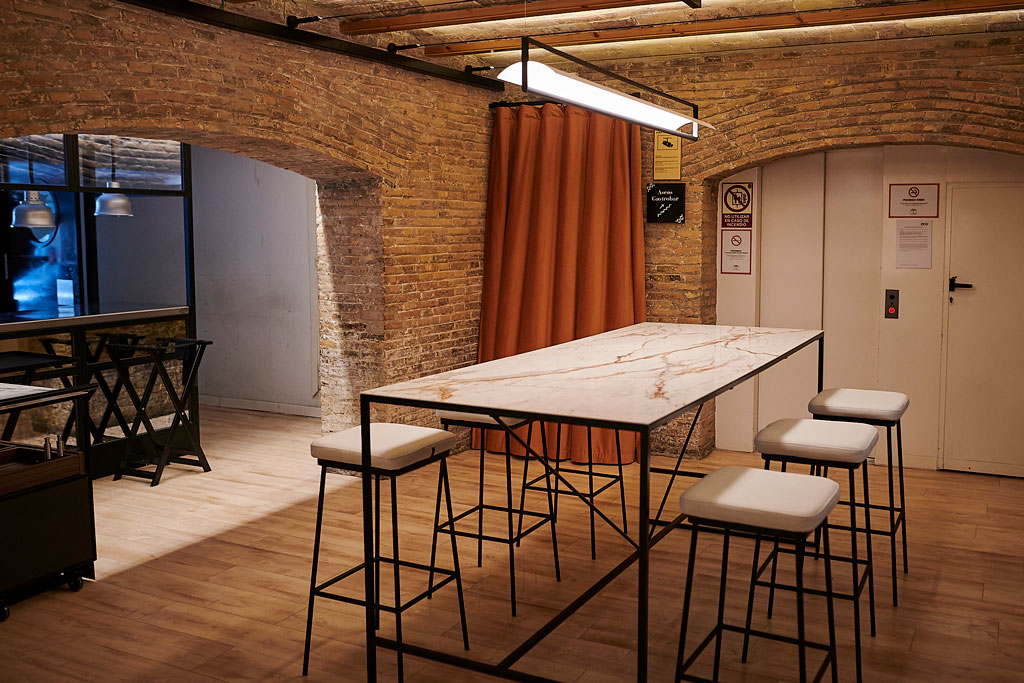An express upgrade for a Michelin Guide gastronomic venue
TALLER 32 went into the kitchen to improve the layout, use, aesthetics and lighting while the restaurant was in operation.

Project: Interior design and restyling of Gastronómico María de la O
Designer: TALLER 32
Products: Fimaplast Tasmanian Moka Boreal and Fimaplast Espiga Sal Textil
Applications: Custom-made furniture made by Pepe & Alonso
Location and year: Granada, 2023
Owner: Grupo Abades
THE KEY TO THE PROJECT:
‘AS ARCHITECT REM KOOLHASS ONCE SAID: THE CHOICE OF MATERIALS IS A BALANCING ACT BETWEEN AESTHETICS AND FUNCTIONALITY, BETWEEN FORM AND SUBSTANCE. FINSA PRODUCTS PROVIDED US WITH THESE CHARACTERISTICS’.
Amanda Paradís, architect of the TALLER 32 studio

Sometimes it is necessary to carry out projects at reproduction speed x2, because businesses continue to function even though they urgently need a restyling to increase their operability. This was the challenge faced by the TALLER 32 studio in the María de la O restaurant, located in Granada and recommended for years in the prestigious Michelin Guide.

The initial approach was based on the usual briefing, which included ‘functional problems, interior design, distribution, lighting... even though we had excellent gastronomic reviews’, explains Amanda Paradís, architect at TALLER 32. In their eagerness to understand the needs from the inside, TALLER 32 witnessed a cooking service to take note of its development, the culinary experience and the story they were trying to convey. ‘One of the key aspects is that we had to undertake the design taking into account that the restaurant was in operation and with confirmed reservations, so the work had to be perfectly planned, every detail meticulously thought out and drawn and that all of it could be assembled and executed in the shortest possible time,’ says Paradís.

Key to this agility was relying on products that offered guarantees. ‘As the architect Rem Koolhaas says: the choice of materials is a balancing act between aesthetics and functionality, between form and substance. Finsa's products provided us with these characteristics,’ says Paradís. We can see Fimaplast Tasmanian Boka Boreal and Fimaplast Espiga Sal Textil applied in the custom-made furniture for this project. Paradís explains the reasons why they opted for these solutions: ‘because of their resistance to humidity and temperature changes, ideal for an environment like this where cleanliness and durability are a priority, and because of their uniformity and consistency, which allow for easy and agile integration into the construction of furniture and interior cladding’.

TALLER 32 found inspiration from ‘the interaction between the physical and cultural context of the site and the creative vision of the project’. They clarify that they drew from ‘the rich architectural and cultural tradition of Granada, seeking to incorporate elements that reflect the unique identity and character of the area. At the same time, our creative vision seeks to reinterpret these contextual influences in a contemporary and relevant way, creating a design that not only responds to the functional needs of the project, but also provokes an emotive and aesthetic experience for those who interact with the space’. A modern interpretation that respects its history and tradition and whose essence is directly transferred to the dish that is tasted at María de la O.
Did you like this case study? Tell us what you thought on Facebook, Instagram, Pinterest, LinkedIn or Twitter.

TALLER 32 encontró la inspiración a partir de “la interacción entre el contexto físico y cultural del lugar y la visión creativa del proyecto”. Aclaran que bebieron de “la rica tradición arquitectónica y cultural de Granada, buscando incorporar elementos que reflejasen la identidad y el carácter únicos de la zona. Al mismo tiempo, nuestra visión creativa busca reinterpretar estas influencias contextuales de una manera contemporánea y relevante, creando un diseño que no solo responda a las necesidades funcionales del proyecto, sino que también provoque una experiencia emotiva y estética para quienes interactúan con el espacio”. Una interpretación moderna que respeta su historia y tradición y cuya esencia se traslada directamente al plato que se degusta en María de la O.
¿Te ha gustado este caso de estudio? Cuéntanos qué te ha parecido en Facebook, Instagram, Pinterest, LinkedIn o Twitter.